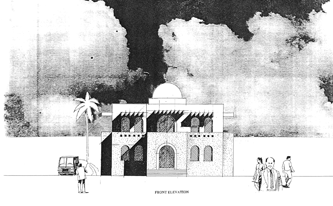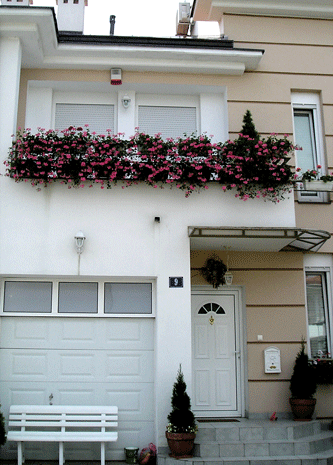IMS Building Technology
Using IMS Building Technology in other countries
The Building Technology was developed in the Institute for testing of materials (IMS). The IMS Institute is an independent scientific research organization, whose fundamental activity is the scientific research and its implementation in the field of building construction, residential building, prestressing systems, building materials technology, equipment control in thermo and hydro plants, building physics and all other problems related to building industry in general. During its eight decades long and rich history, IMS Institute has participated in the largest building projects in the state as well as abroad, and therefore achieved the reputation of an independent research and consulting organization. Since its beginnings, the IMS Institute has maintained close relations with the Belgrade University and the Serbian Academy of Arts and Sciences, that enabled university students and researchers to test their theories in practice in IMS laboratories, but it also provided academic support for the engineers who designed daring structures and new technologies.
The IMS skeleton has been tested in theory and experimentally at the IMS laboratories as well as in other institutions worldwide. It has successfully resisted to various possible loads (static, dynamic, seismic, impact, fire...), showing high safety coefficients. The IMS system holds the certificates of various institutions worldwide, such as: inistry of Public Works, Italy, Ministry of Construction, Cuba, TbilZNIIEP Institute, Georgia, EMI, Hungary, Central Scientific – Research and design – Experimental Institute for the Construction of Complex Building Structures, Russia, Building Research Institute, Ministry of Construction, China.
To adopt the IMS Building Technology, the first thing is to contact the experts of the IMS Institute in Belgrade. They will provide all necessary information regarding the possibilities of application for every single case. There are elaborate questionnaires for interested parties, which help IMS engineers propose the optimal solutions.
If an agreement is reached, IMS engineers will then design the production facilities and selected structural elements. Necessary equipment has to be supplied, either by the IMS Institute, or other independent parties. Only the IMS-specific equipment has to be delivered by the IMS Institute.
Optionally, IMS Institute can provide architectural and structural designs for buildings. Since designing in the IMS system is not complicated, local engineers can usually be trained to work without supervision, especially in case of less complicated buildings.

INITIAL INVESTMENTS
The largest part of the investment is the supply of the construction equipment. An average construction company usually has the majority of the equipment for the production and assembly of IMS system elements, as those are standard building tools and machines.
In the process of the transfer of technology, the IMS Institute provides the following services:
•Delivers all required technical documentation necessary for the application of the system. Included in this is the right to use the IMS Building Technology.
•Designs the production facilities and system elements. Supervises the construction and installation of the production plant. Provides technical assistance and training of local staff.
•Designs the first buildings. Provides technical assistance and training of local engineers to design using the IMS system.
•Supervises on-site the construction of the first project. Provides technical assistance and training of local assembly teams until the finish of the construction works on the first building.
All these listed services represent an insignificantly small percentage of the total initial investment required for the application of the IMS Building Technology.
The cost of the initial investment depends on various project-specific conditions, such as: the planned production capacity, the existing construction equipment, infrastructure (power and water supply, roads), availability of production materials, actual prices and other local conditions

DOWNLOAD THE BROCHURE PDF
English (0.8 MB)Spanish (0.8 MB)
Serbian (0.8 MB)
ONLY TEXT
•IMS Building Technology in practice








 COUNTRY OF ORIGIN
COUNTRY OF ORIGIN